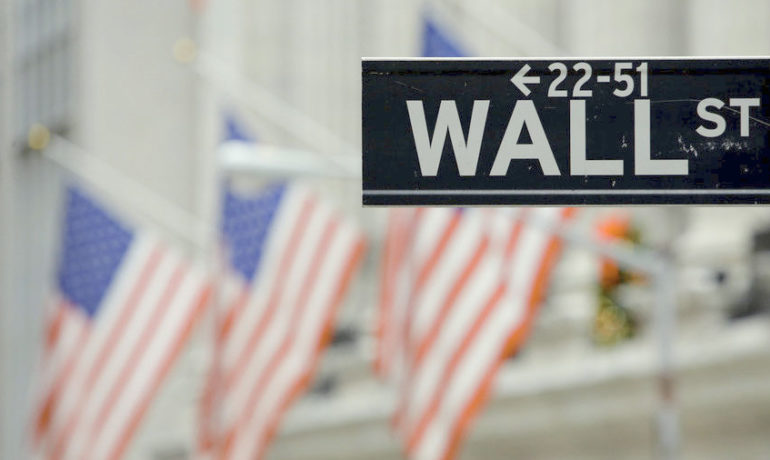In markets around the globe, year-end performance figures proved to be some of the worst in recorded history. The S&P 500 closed at $903.25 representing a 22 percent loss over the past quarter, and a 37 percent loss for the year-end. The rockiness of this market has caused us to reflect on the initial client letter we penned June 30, 2008. We believe that the concerns addressed in that letter have found merit over the past several months, and that those observations remain pertinent today.
Despite the foreknowledge, our clients still suffered negative returns this past quarter. From equities to commodities, there seemed to be no place to hide. When stock prices of consumer staple companies fall off a cliff, one would think that nobody eats, showers, or brushes their teeth in a recession. On a positive note, we have suffered far less than the average market participant. Furthermore, we were thrilled we had plenty of cash on hand to take advantage of many exciting investment opportunities. Another investor joked, “I feel like a mosquito in a nudist colony!” And there is one more reason to celebrate – as suspected, oil prices finally plummeted, sending us all Christmas presents at the fuel pumps.
Volatility
More uncertainty about the future leads to more volatility. To say we have been astounded by the recent market volatility would be an understatement. The typical daily price fluctuations of one percent or so have become more like five percent or greater. This past quarter the VIX index, which indicates market fear based on volatility expectations, reached the highest level in history!
During this last quarter there was mindless selling fed by utter panic. Furthermore, the volatility resulting from the uncertainty was compounded by forced selling from insanely leveraged hedge funds receiving margin calls and forced selling done by money managers of mutual funds stemming from record withdrawals (over $100 billion). To add salt to the wound, many of these investors will find themselves paying capital gains tax for the churning of the portfolio holdings.
It’s during volatile times like these that the smart investor finds buying opportunities while the masses are retreating to the sidelines. We believe this is the time when active managers can shine.
Have We Reached Bottom Yet?
Frequently, the media compares today to the Great Depression. While things have been bad, we would like to point out that we are still nowhere near Great Depression levels. GDP has not dropped 30% and unemployment has not topped 25%. There is nothing to indicate that this is necessarily the market bottom.
Our June 30th letter stated: “Will we return to the higher risk premium demanded by investors of the past, or are those levels never to be seen again? I believe there will be a revulsion against risk and more cautious investor behavior. Greater risk aversion would then bring stocks back to trading within historical norms…while this may sound heretical, this implies the S&P 500 would need to trade around $600.00! I’m not saying this is where it is headed, but it certainly wouldn’t be out of the realm of possibilities given our history.”
Only five months later, with the S&P 500 nearly reaching $740, a price of $600 does not sound so heretical anymore. This $600 price was a figure we calculated to represent the price needed to achieve the low double digit returns market pundits frequently cite. Based on average historical trading multiples, a fair value for the S&P 500 is in the $950-1,000 range (or the Dow between $8,500-9,000) – which is approximately where we are today. Now that we have reached historical norms and even dipped below them, we need to remember that markets tend to overshoot to the downside. Realize that to be in line with the Great Depression, the S&P 500 would bottom below 500 (or the Dow below $4,500)! This means that the stock market could drop another 50 percent, and this would not be uncharacteristic of what we have seen in the past.
Now that we are approaching what have been considered “normal” multiples, we are left to wonder if they will contract further. How much will emotional fear and depression effect the supply-demand equation for equities? How much of future negativity is already priced in? If multiples do contract further, will we end up finding ourselves in a lower multiple environment for years to come?
Many articles have been citing research studying past recessions trying to predict when we can expect the market “bull” to return. One thing that seems clear is that if you wait for economic data to improve before investing, you will likely “miss the boat.” This is because economic data is delayed several months whereas stock prices reflect current information and thus stock prices tend to rebound before the recession ends. In fact, when the common consensus says “things have been really bad and will only get worse,” the market tends to trough because all the worst possible outcomes are already priced into the market. But, with our inability to prime the credit pump and enormous consumer, business, and government debt abounding, will the actual worst case scenario be worse than the believed worst case scenario? Obviously, there is much controversy as to why the market could go either direction from this point, and there are compelling reasons for both cases.
On October 17, 2008, Warren Buffet wrote an article in the New York Times entitled “Buy American. I Am.” His letter alone would be a great quarterly letter (we highly recommend a perusal). In this article he shared one of his most famous quotes, “Be fearful when others are greedy and greedy when others are fearful.” He explained he has been selling U.S. government bonds and pouring into American stocks. Why? For starters, dividend yields are now slightly above the 10-year Treasury rate for the first time in over 50 years. With yields near zero, people are basically paying the government to hold onto their money! He said, “Today people who hold cash equivalents feel comfortable. They shouldn’t.” He went on to say, “So if you wait for the robins, spring will be over.” In reference to this comment, someone quipped, “Is it the early bird gets the worm, or the second mouse gets the cheese?”
We believe this question is irrelevant. We are not in the business of calling “market bottoms,” we are in the business of picking stocks. We believe pouring over historical data and trying to predict future events to know the precise time the market will turn around is a fruitless effort. As mentioned in our June 30, 2008 letter, in the year 2002 the market bottomed at overvalued prices that were considered market peaks in prior markets! In other words, the market bottom will not always reach the Great Depression levels, nor will market tops always reach the irrationally exuberant levels of 2000 and 2007. Investing is about purchasing businesses at prices that will yield attractive forward looking rates of return over the long-haul. Thus, even if the market drops significantly from this point, we believe many of the companies we are purchasing today will prove to be fabulous investments in the years to come. Investors who have the courage to invest in businesses at great prices will triumph over investors who wait for the bottom and miss it.
The bottom line: for a long term investor, it would not be smart to stand on the sidelines – many of the losses have already taken place. To exit at this point and try to fish for the market bottom would seriously harm long-term returns and financial security. Under the assumption that you are not forced to sell at an unfavorable price because cash is needed in the near future, the worst thing an investor could do right now is sell into a falling market that is experiencing declines which are not permanent. We realize that even an oversold security can be oversold further, but those “paper” losses are not permanent losses of capital, whereas, choosing to sell an undervalued security is.
In the past, we have seen markets crash and quickly recoup 50% of their losses, only to roll over and reach further market bottoms. We would not be surprised to see markets trade sideways for years to come with large market swings in both directions over that time frame (as we have already seen over the past decade). Rather than doing what we refer to as “tidal wave investing,” we will continue to ignore the overall market and focus on bottom-up analysis. That is, we will primarily search for individual businesses that can continue to grow regardless of the economy’s state, and are trading at prices below their intrinsic value.
Stock Prices vs. Business Value
Both of our previous letters have explained this principle, but I cannot emphasize it enough – the price of a stock does not dictate the value of the underlying business. The value of a business is simply the present value of all the cash that a business will generate over time. Clearly, the volatility of the earnings of the businesses we own are not gyrating as wildly as their stock prices would indicate. Thus, market prices are not moving based upon objective facts, rather, fear is trumping logic.
Warren Buffet’s mentor, Benjamin Graham, advised “man would be better off if his stocks had no market quotation at all, for he would then be spared the mental anguish caused him by other persons’ mistakes of judgment” (The Intelligent Investor, 1973, p. 107). Speculators are “instructed” by the market as to what the value of a stock should be, whereas investors are “served” by the market which conveniently offers them attractive buying and selling opportunities.
During this time when everything is being sold without regard to the fundamentals, the key is to find out which companies still have strong fundamentals despite the downturn, and they will emerge as the winners. True, many businesses will find difficulty being fully recession proof, but this does not mean the earnings of these companies are in permanent decline. Since the market becomes emotional, it is apt to over accentuate the short term reduction in earnings, making recessions the best environment to find opportunities for the patient investor.
Game Plan
With the recent drop-off in market prices, as expected, our quality holdings have relatively held up much better. We are now beginning to find our portfolios will be enhanced by relocating some of our assets into other companies whose stock prices have plummeted. There is a delicate balance between remaining in our fortress businesses that are trading at historically low prices, and shuffling some assets into other companies that have been unduly punished.
We are not abandoning our strategy. The majority of our portfolios remain in recession resistant companies where the intrinsic value can still grow during a recession/depression, even if growth does slow. But there are also less recession-resistant companies that are trading at prices far too cheap to ignore.
One of our concerns is the apparent nationalization taking place, and the massive debt burdens being placed on the shoulders of our government while striving to prevent a collapse of the economy. In our previous letter, we discussed the need for some form of a bail-out to prevent a collapse of the financial industry. We are disappointed that our federal government changed the rules of the game after the bail-out passed by creating a new program which we fear will not meet the objective of unfreezing credit markets. Additionally, this has created a line out of the door for other industries seeking unwarranted hand-outs, from the home and auto industries to even the pornographic industry! Let us not forget that the financial industry is the underlying foundation for all other industries.
If you equate leverage to drugs, our nation has been hooked on drugs for decades. Whenever we suffer economic pain, we seem to think the solution is to prescribe more drugs. This may give us a temporary, artificial “high,” but it will not work forever. Eventually, we will have to go to “rehab,” and overcome our addiction to overindulgence – and it will be painful. This ingenious plan of overcoming problems stemming from drugs by increasing the dosage of more drugs is bringing into question the long-term value of the dollar. We are not predicting hyper-inflation, but we remain cognizant of the need to be in businesses that have 1. Diverse revenue streams from across the globe, 2. Pricing power and strong brands giving them the ability to raise prices, and 3. Low capital requirements that will prevent them from needing to constantly access the capital markets.
Through all of the panic and commotion over the past quarter, we continue to remain steadfast to our investment approach. We are thrilled to be finding such incredible investment opportunities in high quality companies at attractive prices and are very optimistic about the future prospects for the individual businesses we own.
Sincerely,
The YCG Team
Disclaimer: The specific securities identified and discussed should not be considered a recommendation to purchase or sell any particular security nor were they selected based on profitability. Rather, this commentary is presented solely for the purpose of illustrating YCG’s investment approach. These commentaries contain our views and opinions at the time such commentaries were written and are subject to change thereafter. The securities discussed do not necessarily reflect current recommendations nor do they represent an account’s entire portfolio and in the aggregate may represent only a small percentage of an account’s portfolio holdings. A complete list of all securities recommended for the immediately preceding year is available upon request. These commentaries may include “forward looking statements” which may or may not be accurate in the long-term. It should not be assumed that any of the securities transactions or holdings discussed were or will prove to be profitable. S&P stands for Standard & Poor’s. All S&P data is provided “as is.” In no event, shall S&P, its affiliates or any S&P data provider have any liability of any kind in connection with the S&P data. MSCI stands for Morgan Stanley Capital International. All MSCI data is provided “as is.” In no event, shall MSCI, its affiliates or any MSCI data provider have any liability of any kind in connection with the MSCI data. Past performance is no guarantee of future results.




